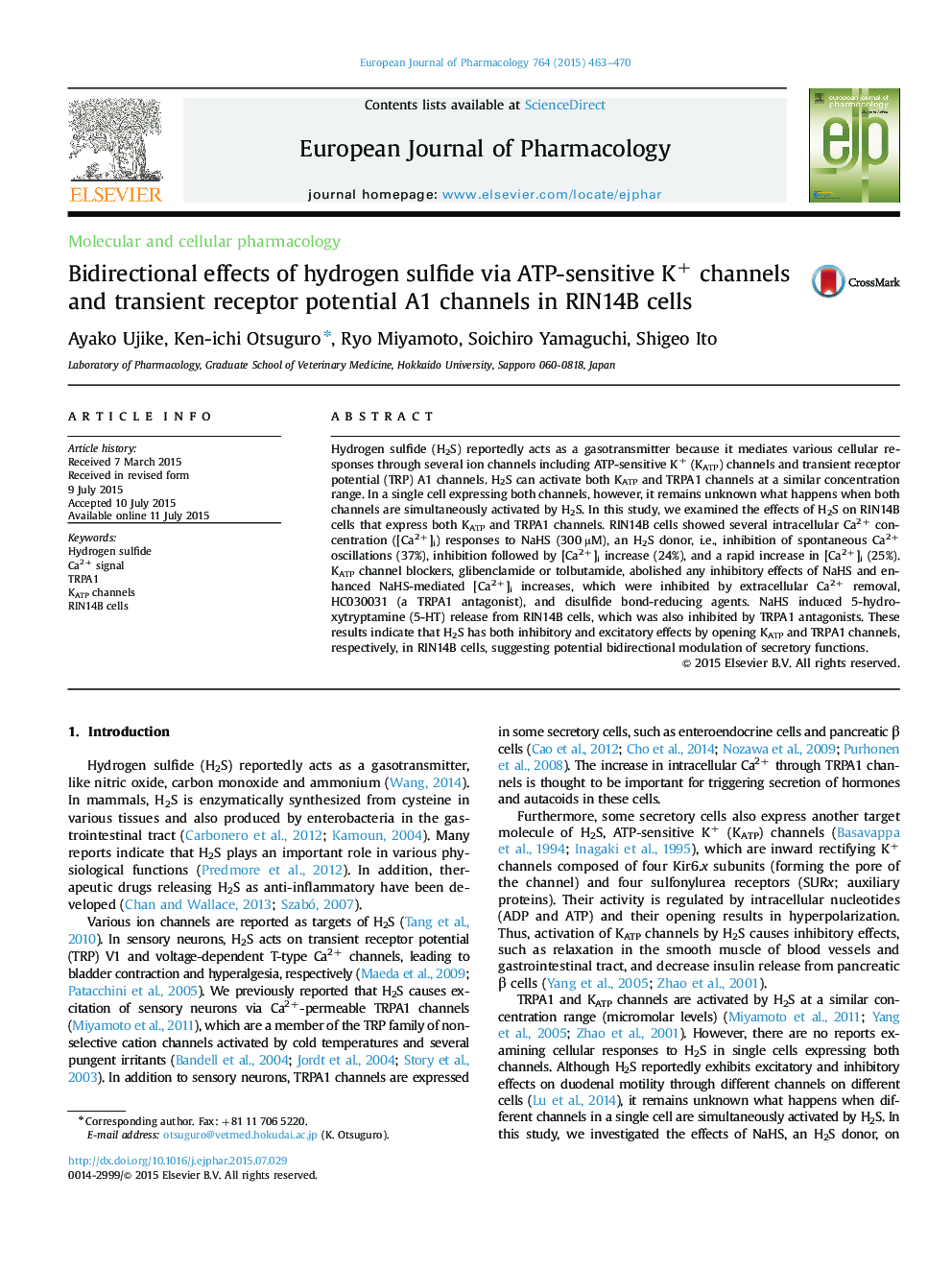| Article ID | Journal | Published Year | Pages | File Type |
|---|---|---|---|---|
| 2531330 | European Journal of Pharmacology | 2015 | 8 Pages |
Hydrogen sulfide (H2S) reportedly acts as a gasotransmitter because it mediates various cellular responses through several ion channels including ATP-sensitive K+ (KATP) channels and transient receptor potential (TRP) A1 channels. H2S can activate both KATP and TRPA1 channels at a similar concentration range. In a single cell expressing both channels, however, it remains unknown what happens when both channels are simultaneously activated by H2S. In this study, we examined the effects of H2S on RIN14B cells that express both KATP and TRPA1 channels. RIN14B cells showed several intracellular Ca2+ concentration ([Ca2+]i) responses to NaHS (300 µM), an H2S donor, i.e., inhibition of spontaneous Ca2+ oscillations (37%), inhibition followed by [Ca2+]i increase (24%), and a rapid increase in [Ca2+]i (25%). KATP channel blockers, glibenclamide or tolbutamide, abolished any inhibitory effects of NaHS and enhanced NaHS-mediated [Ca2+]i increases, which were inhibited by extracellular Ca2+ removal, HC030031 (a TRPA1 antagonist), and disulfide bond-reducing agents. NaHS induced 5-hydroxytryptamine (5-HT) release from RIN14B cells, which was also inhibited by TRPA1 antagonists. These results indicate that H2S has both inhibitory and excitatory effects by opening KATP and TRPA1 channels, respectively, in RIN14B cells, suggesting potential bidirectional modulation of secretory functions.
